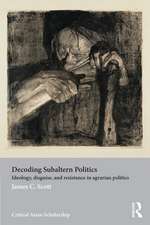Travels in Tartary Thibet and China, Volume Two: 1844-1846
Autor Gabet Editat de Paul Pelliot Traducere de William Hazlitt Autor Hucen Limba Engleză Hardback – 21 oct 2004
'One of the world's best travel books' Spectator 'The work remains a classic worthy of reproduction' The Times Published to critical acclaim and well known for many years afterwards this account of the journey across Mongolia to Lhasa in the early nineteenth century owes much of its success to the literary skills of its authors, made available in English for the first time by William Hazlitt and Paul Pelliot.
Among other topics the chapters cover: The French mission of Peking, Tartar manners and customs, festivals, an interview with a Tibetan Lama, the flooding of the Yellow River, Tartar veterinary surgeons, irrigation projects, comparative studies between Catholicism and Buddhism, war between two living Buddhas, and the Chinese account of Tibet.
| Toate formatele și edițiile | Preț | Express |
|---|---|---|
| Paperback (1) | 119.48 lei 6-8 săpt. | |
| Taylor & Francis – 9 feb 2015 | 119.48 lei 6-8 săpt. | |
| Hardback (1) | 436.91 lei 6-8 săpt. | |
| Taylor & Francis – 21 oct 2004 | 436.91 lei 6-8 săpt. |
Preț: 436.91 lei
Preț vechi: 625.53 lei
-30% Nou
Puncte Express: 655
Preț estimativ în valută:
83.60€ • 87.52$ • 69.18£
83.60€ • 87.52$ • 69.18£
Carte tipărită la comandă
Livrare economică 05-19 aprilie
Preluare comenzi: 021 569.72.76
Specificații
ISBN-13: 9780415344845
ISBN-10: 0415344840
Pagini: 416
Dimensiuni: 138 x 216 x 27 mm
Greutate: 0.94 kg
Ediția:1
Editura: Taylor & Francis
Colecția Routledge
Locul publicării:Oxford, United Kingdom
ISBN-10: 0415344840
Pagini: 416
Dimensiuni: 138 x 216 x 27 mm
Greutate: 0.94 kg
Ediția:1
Editura: Taylor & Francis
Colecția Routledge
Locul publicării:Oxford, United Kingdom
Public țintă
Postgraduate and ProfessionalCuprins
Chapter I; Chapter II; Chapter III; Chapter IV; Chapter V; Chapter VI; Chapter VII; Chapter VIII; Chapter IX; Postscript;
Notă biografică
Huc, Gabet, William Hazlitt, Professor Paul Pelliot
Descriere
Published to critical acclaim and well known for many years afterwards this account of the journey across Mongolia to Lhasa in the early nineteenth century owes much of its success to the literary skills of its authors.












